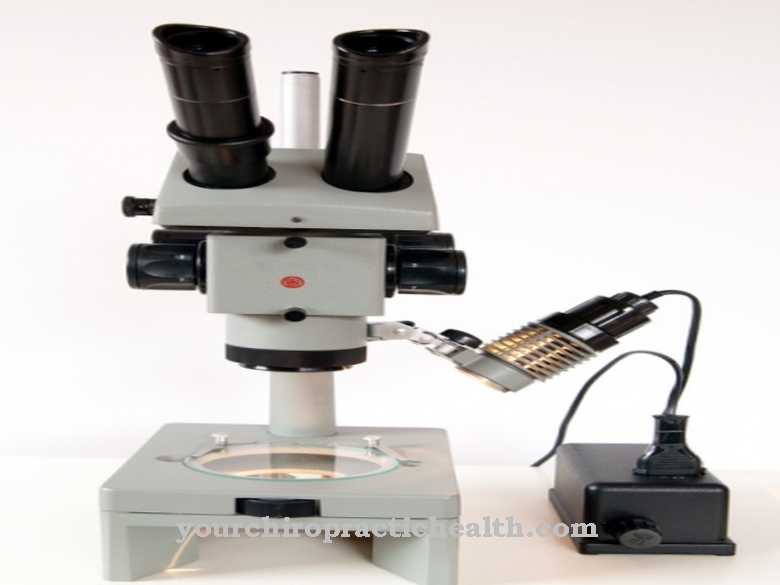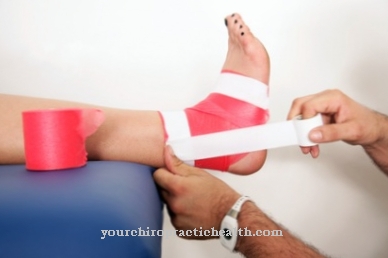Of the Surgical gown is assigned to the generic term of "area clothing". As a medical product, its task is to prevent the spread of pathogens in the surgical wound area or to reduce it to a minimum. The aim is to avoid post-operative wound infection.
What is a surgical gown?

The requirements for medical products are defined in the European series of standards DIN EN 13795. The surgical gown must be sterile and form an effective germ barrier. It has defined functional and mechanical properties and is designed in terms of design and material so that particle emissions are reduced to a minimum. In this regard, the 8th GPSGV and BGR 189 for protective clothing must also be observed.
If surgical gowns are worn in operating theater areas in which there is a risk of use by pathogens or a risk of infection, they must have additional identification according to the 8th GPSGV in order to be classified as "PPE", "personal protective clothing". The manufacturers and the BGR 189 rule provide information on this point.
Shapes, types & types
There are two material classes of surgical textiles: liquid-tight (high performance) and exciter-tight (standard performance). There are disposable and reusable gowns. Is a synonym Surgical gown, because the surgical gown does not only protect the chest, stomach and legs like a normal household gown, but also encloses the arms with cuffs like a coat and extends to the neck.
There are changing gowns, slip gowns and gowns that are tied at the back. Surgical gowns are predominantly made of spunlace, a fabric-like, sterilizable viscose material. Depending on the area of application, they are available in different shapes, sizes, materials and colors. Sterilizable textiles made from 100 percent cotton are also used.
The main colors are green, blue and white. These different colors definitely have their meaning. Doctors wear white work clothing consisting of trousers, a top and a gown for rounds in the hospital or doctor's office. Green or blue area clothing is used in the infection-sensitive operating theater areas. The clinics set a restrictive dress code for all areas, which determines which clothes are to be worn in which rooms. Doctors wear green protective clothing when they perform infection-sensitive operations, the blue color is usually used for all other interventions.
In this way, hospital visitors and patients can also distinguish the surgeons working in the operating theater from their colleagues who work outside of these infection-sensitive areas. The different colored area clothing helps the medical staff to notice these differences immediately and to implement hygienic regulations optimally. Doctors must take off their green area clothing within the operating room before leaving this sensitive area in order not to transfer germs and other pathogens to the less demanding rooms and patients. Failure to adhere to this dress code could result in doctors introducing microbes upon return to the operating theater.
The different colors have other meanings. Hospital logistics are simplified because the flow of laundry is easier to control. The cleaning staff immediately recognizes which clothes are involved and can sort them accordingly.Area clothing from the operating theater requires higher cleaning requirements than white clothing that doctors only wear during rounds.
Visual points are also taken into account. White surgical clothing reflects the bright and artificial light from the surgical lamps and can cause eye fatigue or glare. Green surgical gowns are harmless in this regard. Green textiles also have a calming effect and prevent the afterimage effect that always occurs when a doctor looks for a long time at a red wound and then turns to white textiles. This problem rarely occurs with green and blue textiles. The patient's psyche is also taken into account. Blood stains on a white background are much more threatening than on green or blue textiles.
Structure & functionality
Colored surgical clothing facilitates visual perception. Therefore, most of the surgical gowns are green. The OP is an area of protection level 2 (TRBA 250) and may only be entered by authorized personnel.
The surgical gown is primarily used to control fluids and should be emphasized from a hygienic point of view. During medical activities where there is an increased risk of communicable diseases through body fluids and blood, the surgical gown prevents the contamination of medical staff with pathogens. No high demands are made on the absorbency, unless it is an endoscopic procedure that has a high proportion of fluid. Surgical clothing prevents direct contact of the skin and body surface of the medical staff with the wounds, blood and body fluids of the patient.
The protection of the patient has priority over the ecological aspects of reprocessing. Several studies have shown that there are no differences between disposable and reusable textiles with regard to the ecological balance. However, they must not contain any harmful ingredients such as endotoxins or heavy metals that make disposal difficult.
Medical & health benefits
The surgical gown in its current form has not been around for long. As early as 1952, the American physician William C. Beck had already called for liquid-repellent surgical gowns in all clinical areas, as liquids promote the spread of pathogens.
Nowadays, surgical gowns are used for single and multiple use. Today's "gold standard" is liquid-repellent and liquid-tight up to a certain material thickness. The previously cited European directive defines the properties that surgical textiles, including the surgical gown, must have in order to be classified as a medical product. They must have a microbiological purity (bioburden), react repellent to particulate material (foreign material), release particles on the surface, be resistant to the penetration of liquids, be tear-proof and burst-proof when wet and dry and be comfortable to wear. The surgical gown is ergonomic and allows sufficient freedom of movement.
Operating theater clothing is put on over underwear after changing clothes in the operating theater and is only worn within the operating theater area.






.jpg)










.jpg)



.jpg)

.jpg)




